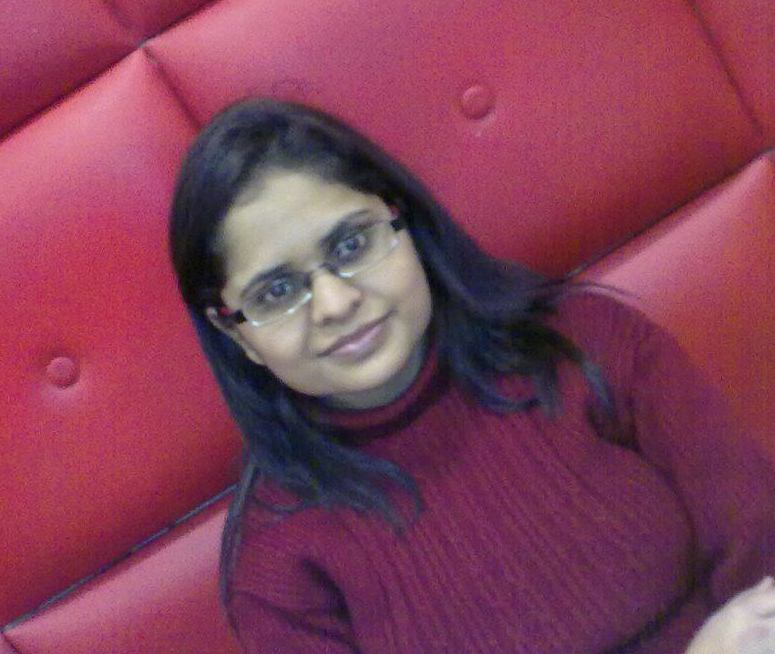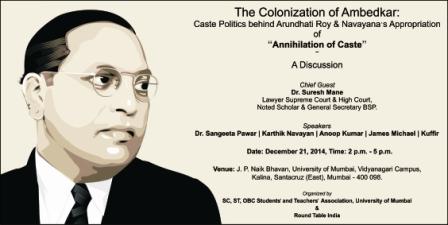Anjali Rajoria
 Nandita Das, the talented Indian actress was recently involved in the campaign “Dark is Beautiful”. The idea has been endorsed by many celebrities across the nation. Despite being a vehement critic of the social standards of ‘Beauty’, I do not extend my support to this campaign. My logic is simple. Let me explain:
Nandita Das, the talented Indian actress was recently involved in the campaign “Dark is Beautiful”. The idea has been endorsed by many celebrities across the nation. Despite being a vehement critic of the social standards of ‘Beauty’, I do not extend my support to this campaign. My logic is simple. Let me explain:
If a population belonging to the same race consists of a monolithic entity (undifferentiated in terms of social standards), it is difficult to create oppressive hierarchies. But if it consists of diverse groups, various parameters (both natural and artificially created ones) need to be propped up to divide people into groups. These groups, besides developing strong in-group solidarity, display our-group contempt and hatred.
Beauty (like skin color) is one such parameter. The facade of beauty has divided women into 2 broad categories – Beautiful and Ugly (to put it very bluntly.) This division actually acts as a hindrance against the collective effort of women to challenge patriarchy by pitting them against one another. Female Beauty, as projected by the profit hungry corporate media, has therefore been reduced to a euphemism for the objectification and over-sexualization of female bodies.
In fact, the entire notion of Beauty revolves around female bodies. The societal value of a woman is attached to this marketable facade. This despicable form of structural oppression portrays the sexuality of women in terms of beauty or femininity or a feature that commands respect. This devious tactic of portraying prejudice against women while maintaining niceties is just another attempt at maintaining patriarchal hegemony.
By giving more value to this marketized commodity of ‘Beauty’, we create a sense of insecurity in the women belonging to the out-group. Instead of grouping together to fight this paternalistic notion of Beauty, individual women of the out-group try to fit into the in-group to increase their individual value. The social structure that legitimizes oppression (in this case beauty) remains firm and unchallenged.
The ‘Dark is Beautiful’ campaign endorsed by celebrities is a manifestation of the same tendency by the leading ladies of Bollywood and models who actually have a wheatish and not dark (as in black) complexion. But these women have refused to question the reprehensible portrayal of women as sex objects in Bollywood. As Chomsky says, “In Capitalism, everything is acceptable at right levels of profit.”
The women who stand to get harmed most by this capitalist propaganda are those who belong to the lowest strata of social hierarchy i.e. the Dalit women. Faced with multiple levels of intersecting oppressions (caste, class, gender and religion), Dalit women, already weighed down with insecurity as they are treated as misfits by both upper castes and men of their own community are further burdened by the given standards of beauty and complexion.

In the ‘Dark is Beautiful’ campaign take the example of Nandita Das, its ‘star campaigner.’ Nandita had performed the role of a Dalit gang rape victim in her movie ‘Bawandar’ (based on the real life story of our hero Bhanwari Devi, the Saathin). It is said that Nandita made Bhanwari her Rakhi sister while the film was being shot. However, the film was released without being shown first to Bhanwari herself. This is a gross violation of the rights of a rape survivor. And despite being promised that she would be provided all kinds of support, she was virtually abandoned by Das and her entire team. The film, however, went on to win various national and international awards, but Bhanwari’s ordeal continues till today. She is still fighting for justice.
This is not the first time that a Dalit gang rape survivor has been exploited by Bollywood. The movie ‘Bandit Queen’, based on the real life story of Phoolan Devi, was also released without being shown to her first. The explicit sexual images displayed in the movie also served the purpose of titillating the masses in the garb of portraying the trials and tribulations of a woman who suffered caste violence throughout her life.
So let us accept the hard reality. Indian cinema is very far from being able to represent caste realities and is truly casteist in its exploitation of Dalit and Adivasi women’s histories, which are always made to fit a caste Hindu grand narrative. It is also not able to give chances to Dalit Adivasi women to express their talent. We all are already aware of the fate that PK Rosy suffered.
It’s just about time that we stopped looking up to these Bollywood actresses for our liberation. Such fake feminist claims can only stockpile facts & figures of Dalit women to show how much women suffer. But they would do nothing in their personal or professional capacity to reduce their agony. Freedom is a privilege extended, unless demanded for one and all. We will use our own voices and be heard on our own.
In fact, it must be noted here that the ‘Dark is beautiful’ campaign is neither a positive response to the ‘Black is Beautiful’ campaign of the 1960’s which was started off by the South African revolutionary Steve Biko and spread to the entire Black diaspora nor is it an indigenous mass movement. Skin color discrimination is a colossal problem in India, which is most violently experienced by a large majority of Indian men and women. This form of discrimination combines with other oppressive regimes of caste, class and gender to routinely deny rightful opportunities to vast number of citizens.

Whereas the Black is Beautiful movement emerged from the masses and even today stands as the most profound challenge to European aesthetics. In contrast, the Dark is Beautiful campaign in India is emerging from highly successful upper caste women who are protesting the loss of few more lucrative mainstream opportunities due to their relatively darker skin tones. These successful actresses, models and activists hardly pose any serious challenge to the Brahmanical aesthetics but are in fact enhancers of the caste hindu aesthetics and power structures.
What we really need here is an understanding and appreciation of our differences without attaching any tag to them. Every life form is beautiful in its own way. Every human deserves respect. Skin color (whether white or dark or red or blue or whatever) does not and should not matter at all. Diversity only adds spice to life. Plurality is a wonderful gift of nature that needs to be celebrated instead of being used as a tool to divide and oppress people.
~~~
Anjali Rajoria is a medical graduate based in New Delhi and is a civil services aspirant. Email:angelrajoria@gmail.com.










